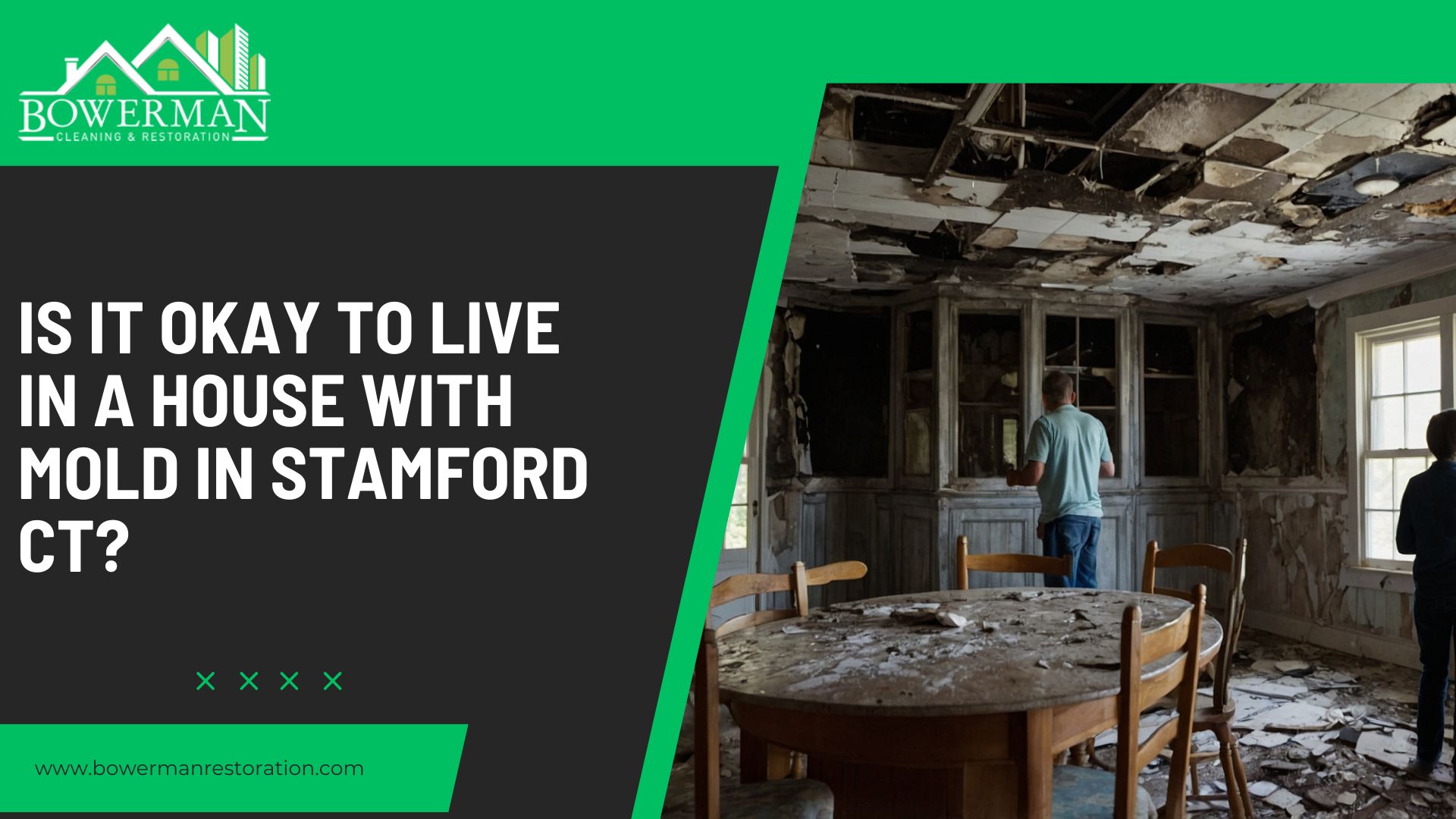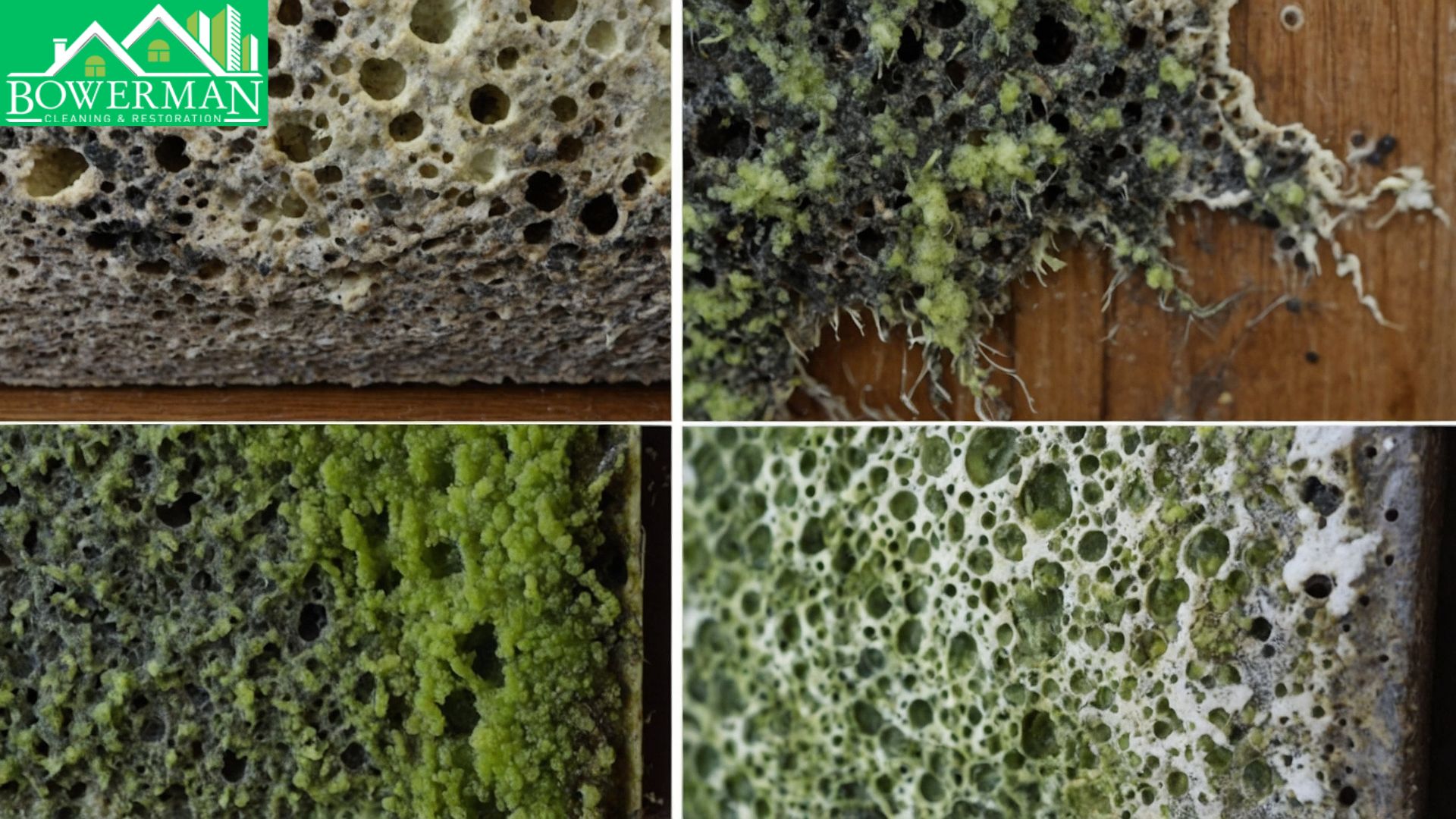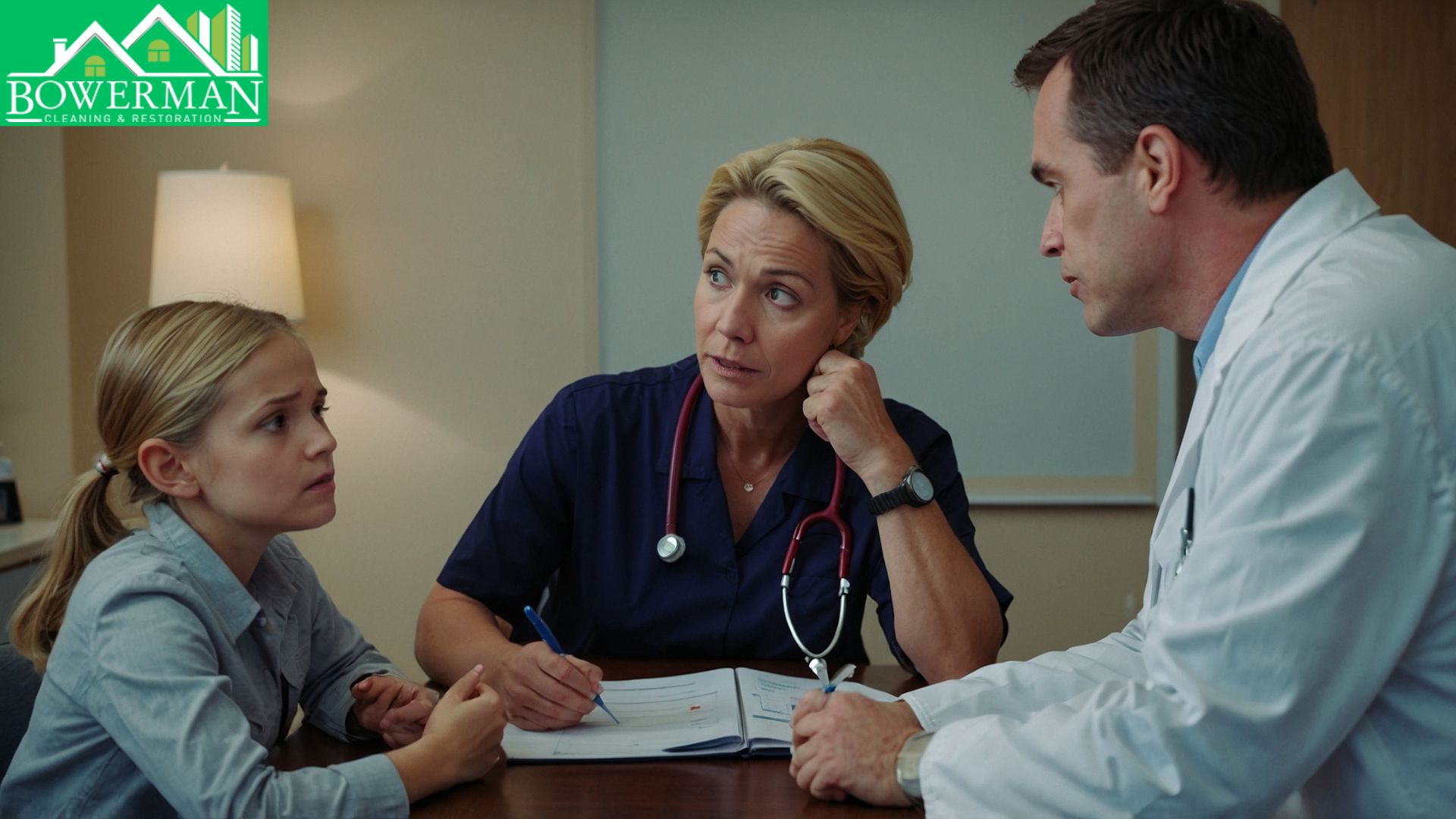
Living with mold in your Stamford, Connecticut home is not just uncomfortable—it’s potentially dangerous to your health and property value. Many homeowners in Stamford face this challenging question: is it okay to live in a house with mold? The short answer is no, but the reality is more complex than a simple yes or no response.
Mold growth in homes is particularly common in Connecticut due to the state’s humid climate, especially during summer months and in areas with poor ventilation. Stamford residents often discover mold in basements, bathrooms, attics, and other moisture-prone areas of their homes. While small amounts of mold spores are naturally present everywhere, living in a house with visible mold growth or significant mold contamination poses serious risks that shouldn’t be ignored.
The health implications of living with mold in Stamford can range from mild allergic reactions to severe respiratory problems, particularly for individuals with compromised immune systems, asthma, or existing respiratory conditions. Children and elderly residents are especially vulnerable to mold-related health issues. Beyond health concerns, mold can cause significant structural damage to your home, potentially costing thousands of dollars in repairs if left untreated.
Understanding when it’s safe to remain in your home during mold remediation and when temporary relocation is necessary depends on several factors, including the type of mold present, the extent of contamination, and the health status of occupants. Professional mold assessment and remediation services can help determine the severity of your situation and provide guidance on whether it’s safe to continue living in your Stamford home while addressing the mold problem.
This comprehensive guide will explore the risks associated with mold exposure, help you identify when professional intervention is necessary, and provide practical solutions for dealing with mold issues in your Stamford home while prioritizing your family’s health and safety.
Key Takeaways
- Health risks are real: Living in a house with mold can cause respiratory problems, allergic reactions, and other health issues, particularly for sensitive individuals including children, elderly residents, and those with compromised immune systems.
- Immediate action required: Visible mold growth or musty odors indicate a problem that needs professional assessment and remediation rather than attempting to live with the condition.
- Professional assessment is crucial: Determining whether it’s safe to remain in your home requires expert evaluation of mold type, contamination extent, and potential health risks specific to your situation.
- Temporary relocation may be necessary: Severe mold contamination, particularly involving toxic black mold or extensive growth, often requires occupants to vacate the premises during professional remediation.
- Prevention is key: Controlling moisture, improving ventilation, and addressing water damage promptly can prevent mold growth and eliminate the need to make difficult decisions about habitability.
- Property value impact: Mold problems can significantly decrease your home’s value and create legal disclosure requirements when selling your Stamford property.
- Insurance considerations: Many homeowner’s insurance policies have specific provisions regarding mold damage, making prompt professional remediation financially important.
- Local climate factors: Stamford’s humid climate and seasonal weather patterns create conditions conducive to mold growth, requiring proactive moisture management strategies.
Understanding Mold Growth in Stamford Homes
Stamford’s location in Fairfield County exposes homes to specific environmental conditions that promote mold growth. The region experiences high humidity levels, particularly during summer months, combined with temperature fluctuations that create condensation problems in poorly ventilated spaces. These conditions make Stamford homes particularly susceptible to mold development in basements, crawl spaces, bathrooms, and areas around windows and doors.
Mold requires three basic elements to thrive: moisture, organic material to feed on, and suitable temperatures. Most homes provide abundant organic materials in the form of wood, paper, fabric, and other cellulose-based materials. Temperature ranges comfortable for human habitation are also ideal for mold growth. The controlling factor is typically moisture, which can come from various sources including plumbing leaks, roof damage, poor ventilation, flooding, or simply high humidity levels.
Different types of mold present varying levels of risk to human health. Common household molds include Aspergillus, Penicillium, and Cladosporium, which can cause allergic reactions and respiratory irritation. More concerning is Stachybotrys chartarum, commonly known as black mold, which produces mycotoxins that can cause severe health problems including neurological symptoms, immune system suppression, and respiratory distress.
The extent of mold contamination significantly impacts whether it’s safe to continue living in an affected home. Small, isolated patches of surface mold might be manageable with proper cleaning and moisture control, while extensive growth behind walls, in HVAC systems, or throughout multiple rooms typically requires professional remediation and temporary relocation of occupants.

Health Risks of Living with Mold Exposure
The health implications of living with mold in Stamford extend far beyond simple discomfort, potentially causing both immediate and long-term health problems. Mold exposure occurs primarily through inhalation of airborne spores, though skin contact and ingestion can also cause reactions. The severity of health effects depends on the individual’s sensitivity, the type and concentration of mold present, and the duration of exposure.
Immediate health effects of mold exposure include respiratory symptoms such as coughing, wheezing, throat irritation, and nasal congestion. Many people experience allergic reactions including sneezing, runny nose, red eyes, and skin rashes. These symptoms often worsen in the presence of mold and improve when away from the contaminated environment, providing a clear indication that mold exposure is the culprit.
Individuals with pre-existing respiratory conditions face heightened risks when exposed to mold. Asthma sufferers may experience increased frequency and severity of attacks, while those with chronic obstructive pulmonary disease (COPD) may find their symptoms significantly worsened. People with compromised immune systems, including those undergoing cancer treatment, taking immunosuppressive medications, or living with HIV/AIDS, are particularly vulnerable to serious mold-related infections.
Long-term exposure to certain types of mold, particularly those producing mycotoxins, can lead to more severe health problems. These may include persistent respiratory infections, memory problems, fatigue, headaches, and in extreme cases, neurological symptoms. Children exposed to mold may develop asthma or experience developmental delays, while pregnant women face potential risks to fetal development.
The question of whether it’s okay to live in a house with mold becomes particularly critical when considering these health risks. Even if adults in the household can tolerate mild mold exposure, the presence of children, elderly family members, or individuals with health conditions may necessitate immediate action and temporary relocation during remediation efforts.

When Professional Mold Remediation Becomes Necessary
Determining when professional intervention is required for mold problems involves assessing both the scope of contamination and the potential health risks to occupants. While minor mold growth on non-porous surfaces might be addressed through careful cleaning and moisture control, extensive contamination typically requires professional remediation services to ensure complete removal and prevent recurrence.
Professional mold remediation becomes essential when mold growth covers areas larger than 10 square feet, as recommended by the Environmental Protection Agency. However, even smaller areas may require professional attention if the mold is located in HVAC systems, involves porous materials like drywall or insulation, or if occupants are experiencing health symptoms related to mold exposure.
The type of mold present also influences the decision to seek professional help. While laboratory testing isn’t always necessary for remediation decisions, the presence of black mold or other potentially toxic varieties typically warrants professional assessment and removal. Professional remediation teams have the equipment, training, and safety protocols necessary to handle dangerous mold varieties safely.
Hidden mold growth presents particular challenges for homeowners trying to determine appropriate response measures. Mold growing behind walls, under flooring, or in other concealed areas may not be immediately visible but can still cause health problems and structural damage. Professional mold inspectors use specialized equipment including moisture meters, thermal imaging cameras, and air sampling devices to detect hidden mold growth.
Bowerman and other reputable remediation companies in the Stamford area provide comprehensive mold assessment services that help homeowners understand the extent of their mold problems and develop appropriate remediation strategies. These professionals can determine whether it’s safe for occupants to remain in the home during remediation or if temporary relocation is necessary to protect health and safety.
Factors Determining Whether You Can Stay in Your Home
The decision about whether it’s safe to continue living in a mold-contaminated home depends on multiple interconnected factors that must be carefully evaluated. The extent and location of mold growth play crucial roles in this determination, as does the health status of all occupants and the type of remediation work required.
Small, isolated mold problems that don’t involve HVAC systems or extensive structural contamination may allow occupants to remain in unaffected areas of the home during remediation. However, this requires proper containment measures to prevent cross-contamination and ensure that remediation activities don’t spread mold spores to clean areas of the house.
The location of mold growth significantly impacts habitability decisions. Mold in bedrooms, kitchens, or other frequently occupied spaces typically requires temporary relocation, while contamination limited to basements, attics, or other less-used areas might allow continued occupancy with proper containment. HVAC system contamination almost always necessitates alternative housing arrangements, as the system can distribute mold spores throughout the entire home.
Health considerations of occupants are paramount in making habitability decisions. Homes with infants, elderly residents, pregnant women, or individuals with respiratory conditions, compromised immune systems, or mold allergies typically require more conservative approaches. Even minor mold exposure that might be tolerable for healthy adults can pose serious risks to vulnerable populations.
The scope and duration of remediation work also influence whether occupants can safely remain in the home. Minor cleaning and repair work might be completed while maintaining safe occupancy, but extensive remediation involving wall removal, insulation replacement, or major structural repairs typically requires temporary relocation. The use of strong cleaning chemicals, sealants, and other remediation materials can create additional health hazards that make occupancy inadvisable.
Professional remediation companies evaluate these factors comprehensively to make informed recommendations about occupancy during mold removal. Their expertise helps ensure that decisions prioritize occupant health while minimizing disruption and additional costs associated with temporary housing arrangements.
Prevention and Long-Term Solutions for Mold Control
Preventing mold growth in Stamford homes requires a comprehensive approach addressing moisture control, ventilation, and ongoing maintenance practices. Understanding that prevention is far more cost-effective and less disruptive than remediation helps homeowners prioritize proactive measures that eliminate conditions conducive to mold development.
Moisture control forms the foundation of effective mold prevention strategies. This includes promptly repairing plumbing leaks, addressing roof damage, and ensuring proper drainage around the home’s foundation. Basement waterproofing and crawl space encapsulation can significantly reduce moisture levels in these vulnerable areas, while proper grading and gutter maintenance prevent water intrusion from exterior sources.
Ventilation improvements play a crucial role in mold prevention, particularly in high-humidity areas like bathrooms, kitchens, and laundry rooms. Installing exhaust fans, ensuring adequate air circulation, and using dehumidifiers during humid seasons help maintain indoor humidity levels below 50%, creating conditions unfavorable for mold growth. HVAC system maintenance, including regular filter changes and duct cleaning, prevents mold growth within the system and ensures healthy air circulation throughout the home.
Regular home maintenance and inspection routines help identify potential mold problems before they become serious health hazards. This includes checking for signs of water damage, monitoring humidity levels, and addressing any musty odors or visible mold growth immediately. Professional annual inspections can identify hidden problems and ensure that prevention measures remain effective.
Long-term solutions may include structural improvements such as better insulation to prevent condensation, upgraded roofing materials, or installation of whole-house ventilation systems. These investments not only prevent mold problems but also improve overall indoor air quality and energy efficiency, providing multiple benefits for homeowners.
Working with experienced professionals like Bowerman ensures that prevention strategies are tailored to specific home conditions and local climate factors. Their expertise helps homeowners implement comprehensive solutions that address both immediate concerns and long-term mold prevention goals.
Frequently Asked Questions
Can I sleep in a house with mold? Sleeping in a house with mold is not recommended, especially if you’re experiencing symptoms like coughing, congestion, or breathing difficulties. Mold spores are often more concentrated at night when air circulation decreases, potentially worsening exposure during sleep hours.
How long can you live in a house with mold before it affects your health? Health effects from mold exposure can begin within hours or days for sensitive individuals, while others might not experience symptoms for weeks or months. The timeline depends on individual sensitivity, mold type, and concentration levels.
What are the first signs that mold in my home is affecting my health? Early signs include persistent coughing, sneezing, throat irritation, nasal congestion, eye irritation, and skin rashes. Symptoms typically worsen when at home and improve when away from the property.
Is it safe to clean mold myself or should I hire professionals? Small areas of mold (less than 10 square feet) on non-porous surfaces can often be cleaned safely by homeowners using proper protective equipment. Larger areas, porous materials, or HVAC contamination require professional remediation.
How do I know if the mold in my Stamford home is dangerous? All mold growth should be taken seriously, but professional testing can identify specific types and concentrations. Black mold, extensive growth, or mold causing health symptoms typically indicate dangerous conditions requiring immediate professional attention.
Will my homeowner’s insurance cover mold remediation costs? Coverage varies significantly between policies and circumstances. Mold resulting from sudden water damage may be covered, while gradual moisture problems or maintenance-related mold growth often aren’t covered.
How long does professional mold remediation take in Stamford homes? Remediation timeframes vary based on contamination extent, ranging from 1-3 days for minor problems to several weeks for extensive contamination requiring structural repairs and material replacement.
Can mold come back after professional remediation? Mold can return if underlying moisture problems aren’t addressed or if proper prevention measures aren’t maintained. Quality remediation includes moisture control and prevention strategies to minimize recurrence risk.
Conclusion
The question “is it okay to live in a house with mold in Stamford CT” has a clear answer: no, it’s not safe to continue living in a home with significant mold contamination. While minor, isolated mold growth might be manageable with proper cleaning and moisture control, any visible mold growth or musty odors indicate problems that require immediate attention and professional assessment.
The health risks associated with living with mold in Stamford are too significant to ignore, particularly for vulnerable populations including children, elderly residents, and individuals with respiratory conditions or compromised immune systems. Even healthy adults can develop serious health problems from prolonged mold exposure, making prompt remediation essential for protecting your family’s well-being.
Professional mold assessment and remediation services provide the expertise necessary to determine whether your home is safe for continued occupancy during mold removal or if temporary relocation is required. Companies like Bowerman offer comprehensive solutions that address both immediate mold problems and long-term prevention strategies, ensuring that your Stamford home remains healthy and safe for your family.
Remember that mold problems don’t improve on their own and typically worsen over time without proper intervention. Taking immediate action when mold is discovered protects both your family’s health and your property investment, preventing minor problems from becoming major health hazards and costly structural damage. Prioritize professional assessment and remediation to ensure your Stamford home provides the safe, healthy environment your family deserves.


